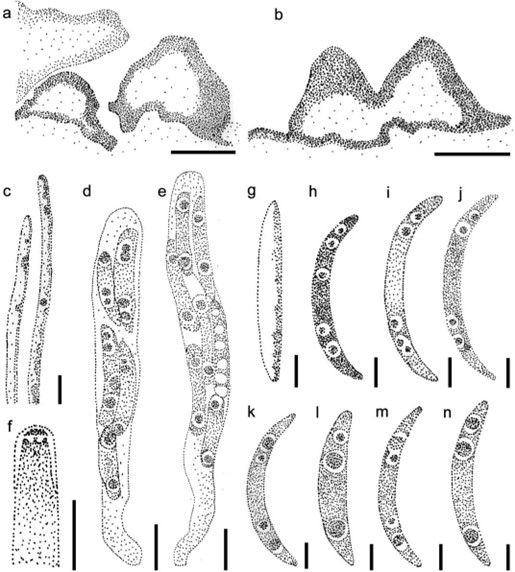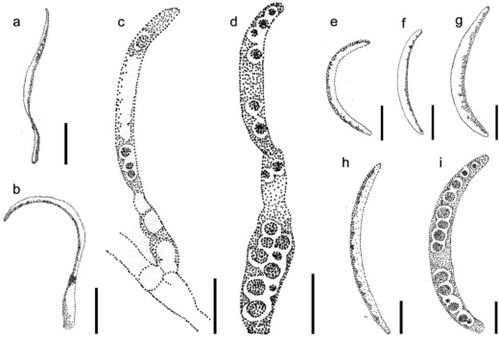Leptosillia Höhn., Mitt. bot. Inst. tech. Hochsch. Wien 5: 111 (1928)
MycoBank number: MB 2797; Index Fungorum number: IF 2797; Facesoffungi number: FoF 06205; 9 morphological species (Species Fungorum 2020), 6 species with sequence data.
Type species – Leptosillia notha Höhn.
Notes – When establishing Cresporhaphis, a synonym of Leptosillia, Aguirre-Hudson (1991) described its association with an unidentified globose chlorococcoid photobiont. Various species were included, as probably lichenized and Calatayud & Aguirre-Hudson (2005) considered Cresporhaphis ulmi as not lichenised. Voglmayr et al. (2019a) introduced seven species as new combinations in Leptosillia. Species of Leptosillia have superficial to partly immersed, subglobose to pyriform, ostiolate ascomata, with a peridium of textura angularis or prismatica, and clavate to cylindrical asci and lunate ascospores. The asexual morph has superficial conidiomata with cells of textura globulosa to angularis in the conidiomatal wall, short hyaline conidiophores, cylindrical to lageniform conidiogenous cells and lunate or filiform conidia (Voglmayr et al. 2019a).

Figure 145 – Sexual morph of Leptosillia muelleri (redrawn from Voglmayr et al. 2019a). a, b Ascomata on the substrate. c Paraphyses. d, e Asci. f Ascus apex in Lugol’s reagent. g Dead ascospores. h-n Vital ascospores. Scale bars: a, b = 100 µm, c = 5 µm, d-f = 10 µm, g-n = 5 µm.

Figure 146 – Asexual morph of Leptosillia muelleri (redrawn from Voglmayr et al. 2019a). a, b Conidiophores, conidiogenous cells and conidia from pycnidia on natural substrates. c, d Conidiophores, conidiogenous cells and conidia from pycnidia in pure culture. e-i Conidia from natural substrate (e – dead, f-I – vital). Scale bars: a-d = 10 µm, e-i = 5 µm.
Species
